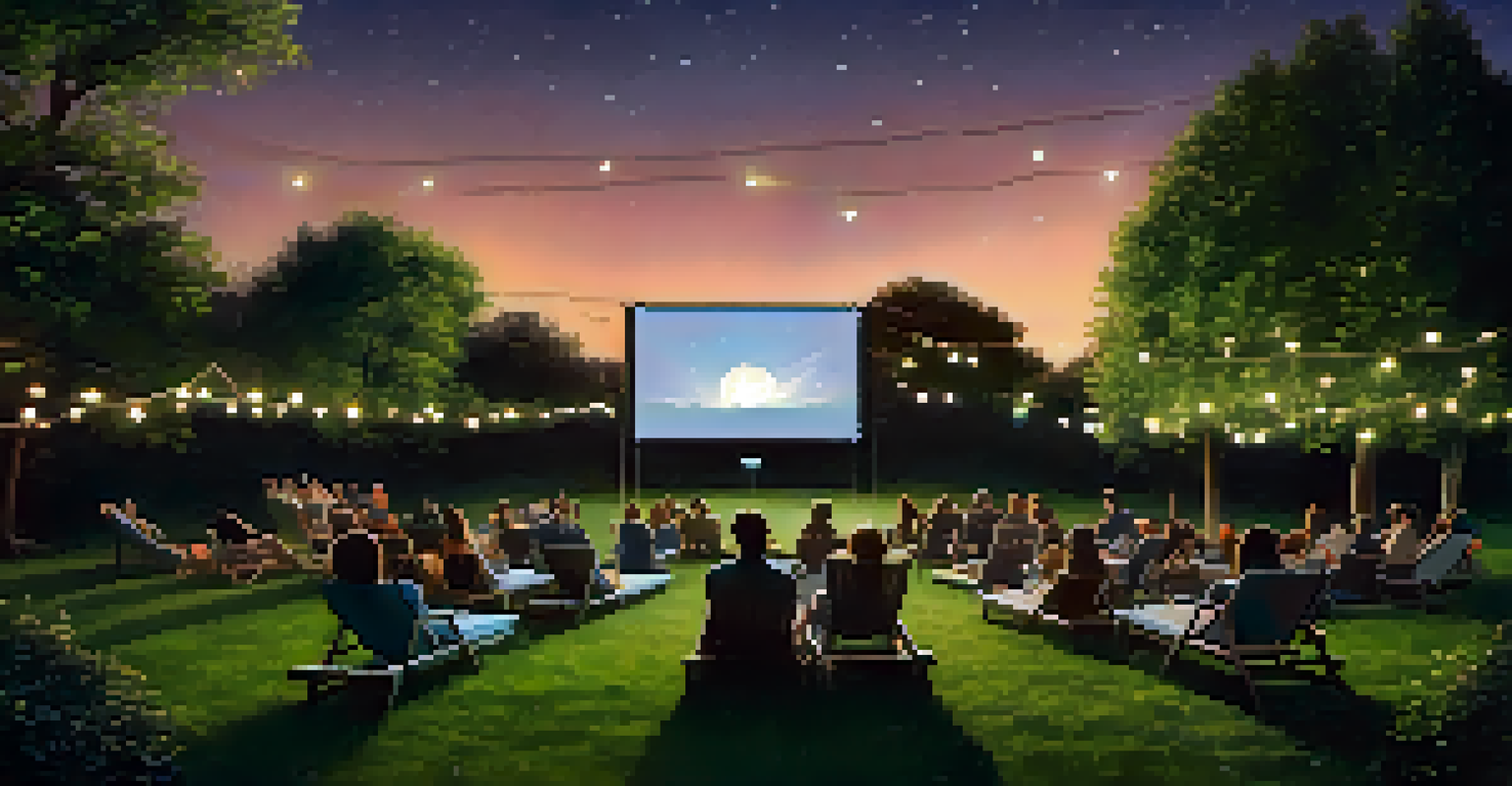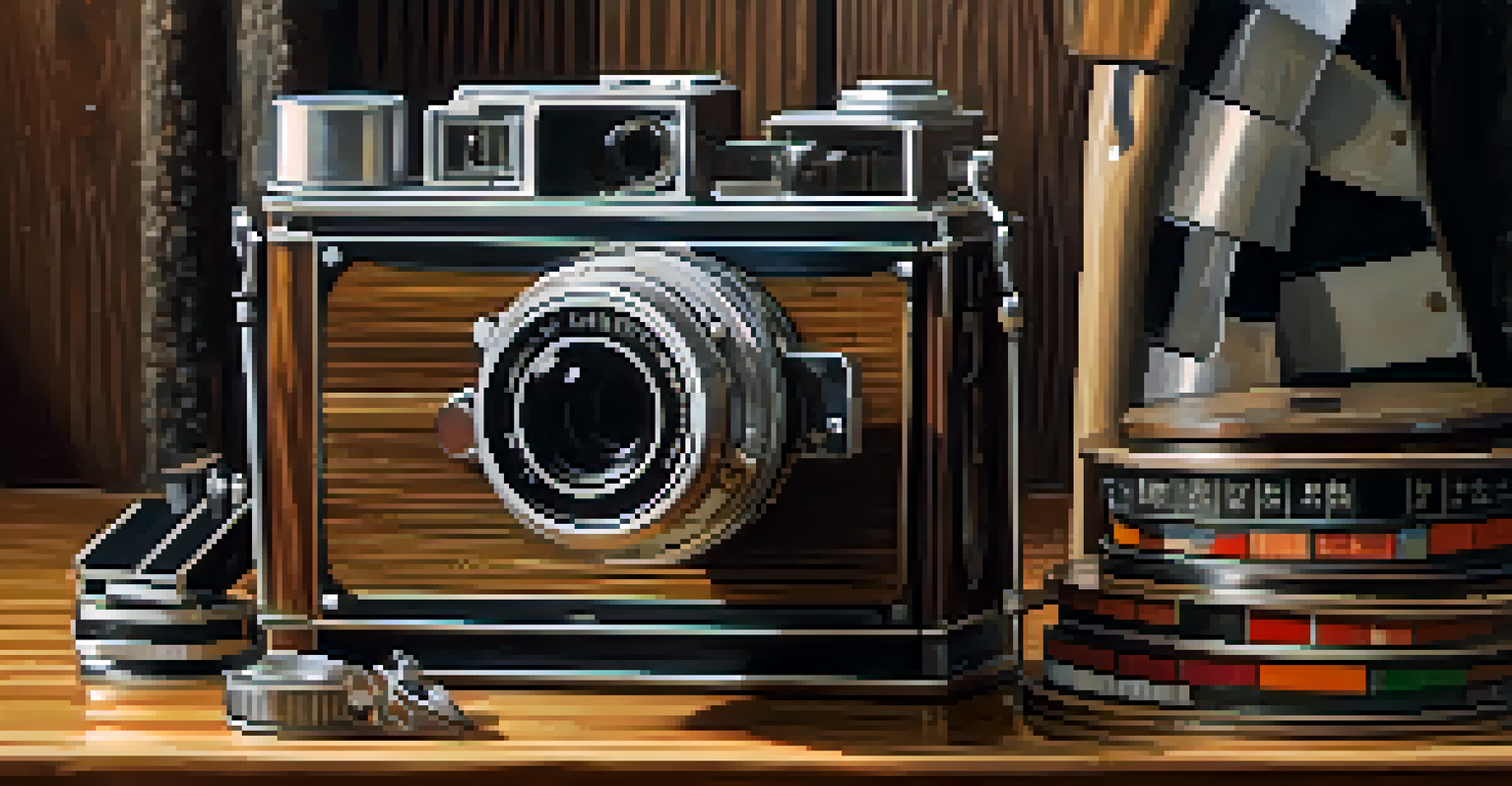The Language of Film Criticism: Terminology and Its Importance

What Is Film Criticism and Why It Matters
Film criticism is the art of analyzing and evaluating films to help audiences understand their value and meaning. It goes beyond just liking or disliking a movie; it involves a deep dive into themes, techniques, and cultural context. This form of critique is essential as it guides viewers in making informed choices about what to watch.
Film is a reflection of our culture; it tells us who we are and what we value.
Moreover, film criticism fosters a dialogue about cinema, bringing together diverse perspectives. It encourages viewers to think critically about what they see on screen and appreciate the craft involved in filmmaking. In an age of overwhelming content, a well-articulated critique can shine a light on hidden gems that audiences might otherwise overlook.
Ultimately, film criticism enriches the viewing experience by providing insights that enhance our understanding and appreciation of cinema. It serves as a bridge between filmmakers and audiences, highlighting the artistic, social, and emotional elements of a film that might go unnoticed.
Key Terms in Film Criticism: An Overview
Just like any field, film criticism has its own vocabulary that helps articulate complex ideas succinctly. Terms like 'narrative structure,' 'cinematography,' and 'character development' are commonly used to dissect films. Understanding these terms can enhance your appreciation for the art and craft of filmmaking.

For instance, 'narrative structure' refers to how a story is organized, which can deeply impact audience engagement. On the other hand, 'cinematography' speaks to the visual elements of a film, including camera angles and lighting, which play a crucial role in storytelling. Familiarity with such terms allows viewers to grasp what critics are discussing and why it matters.
Film Criticism Enhances Viewing
Film criticism deepens audience understanding and appreciation of movies by analyzing themes, techniques, and cultural context.
When critics employ these terms, they provide a framework that viewers can use to think about films. This shared language not only helps in discussing films but also fosters a deeper appreciation for the various elements that come together to create cinematic art.
The Importance of Narrative Structure in Films
Narrative structure is a cornerstone of storytelling in film, dictating how the plot unfolds. Many films follow a classic three-act structure, consisting of setup, confrontation, and resolution. This framework helps audiences follow the story and become emotionally invested in the characters' journeys.
Cinematography is infinite in its possibilities... much more so than music or language.
Critics often analyze how effectively a film adheres to or deviates from this structure. For example, a film that starts with a strong hook but loses momentum in the second act might receive criticism for poor pacing. Recognizing these narrative techniques enhances viewers' understanding of how a story can be told.
Moreover, the exploration of alternative narrative structures, such as non-linear storytelling, opens up discussions about creativity in cinema. By appreciating these different approaches, audiences can expand their horizons and engage with films on a more profound level.
Cinematography: The Art of Visual Storytelling
Cinematography is often described as the visual language of film, capturing the mood and tone of a story. It encompasses everything from camera angles to lighting, each choice influencing how viewers perceive the narrative. A well-executed cinematographic technique can evoke emotions and create a lasting impact.
Critics analyze cinematography to highlight how visual elements enhance or detract from the storytelling. For instance, the use of dim lighting in a suspenseful scene can amplify tension, while vibrant colors in a romantic comedy might evoke joy. Understanding these choices allows viewers to appreciate the artistry behind the camera.
Cinematography Shapes Stories
The visual language of cinematography significantly influences how narratives are perceived and felt by the audience.
By dissecting cinematography, critics help audiences understand that filmmaking is not just about the story but also about how that story is presented. This appreciation for visual storytelling enriches the overall viewing experience, making it more engaging and thought-provoking.
Character Development: Building Relatable Stories
Character development refers to the process through which characters evolve throughout a film. Well-developed characters often resonate with viewers, as they mirror real-life complexities and emotions. Critics often explore how effectively a film portrays its characters, examining their motivations and growth.
For example, a character who undergoes significant transformation—from a timid individual to a confident leader—can leave a profound impact on the audience. Critics may point out moments that showcase this development, helping viewers appreciate the layers of character depth. This analysis allows for a richer understanding of the narrative.
Ultimately, character development engages audiences emotionally, making them invested in the storyline. By understanding this term and its significance, viewers can better appreciate the craftsmanship that goes into creating memorable and relatable characters.
Themes and Motifs: The Heart of Film Messages
Themes and motifs are integral to conveying the deeper messages of a film. A theme represents the central idea or message, while motifs are recurring elements that reinforce this idea. Critics often dissect these aspects to unveil the layers of meaning embedded in a film's narrative.
For instance, a film exploring themes of love and sacrifice may use motifs like shared meals or intertwined hands to symbolize connection. Critics highlight these elements, encouraging viewers to look beyond the surface and engage with the film's core messages. This deeper analysis fosters a richer viewing experience.
Character Development Engages Viewers
Well-developed characters resonate emotionally with audiences, enhancing their investment in the film's storyline.
Understanding themes and motifs also enables audiences to connect personally with films. When viewers recognize the underlying messages, they can reflect on their own experiences and emotions, making the film resonate more powerfully. This connection is what often turns a good film into a memorable one.
The Role of Sound and Music in Film Criticism
Sound and music are often overlooked components of film criticism, yet they play a crucial role in shaping the viewing experience. Sound design includes everything from dialogue and sound effects to ambient noise, while the score enhances emotional engagement. Critics analyze these aspects to evaluate how effectively they contribute to the film's atmosphere.
For example, a suspenseful score can heighten tension, while a cheerful soundtrack can evoke joy. Critics often discuss how well the sound complements the visuals, creating a cohesive experience for the audience. This analysis reveals the integral role sound plays in storytelling.

By understanding the importance of sound and music, viewers can appreciate how these elements influence their emotional responses. Recognizing this aspect of film criticism deepens appreciation for the craftsmanship involved in creating immersive cinematic experiences.